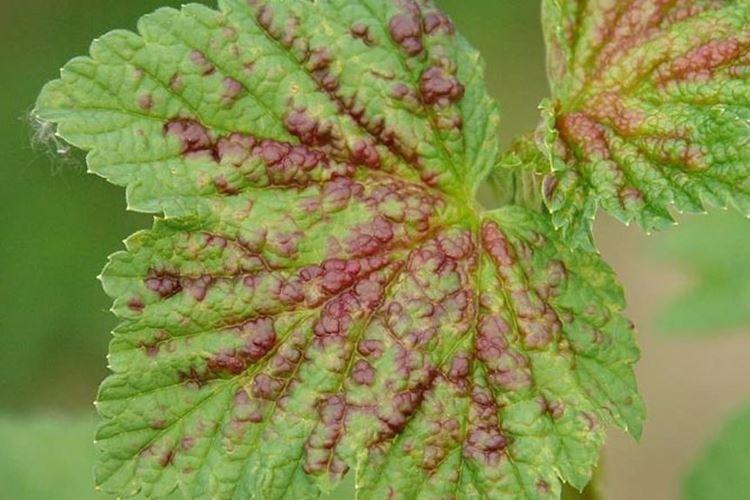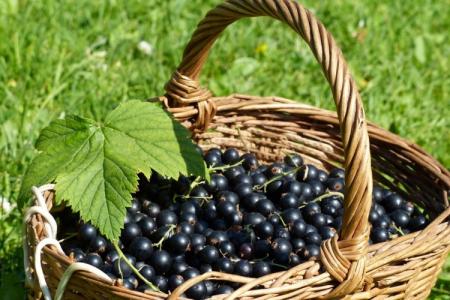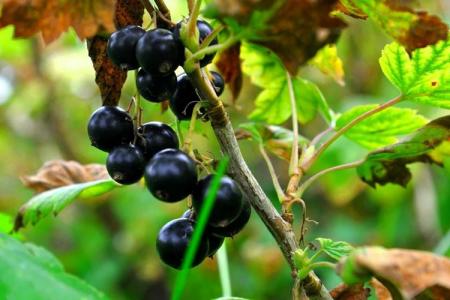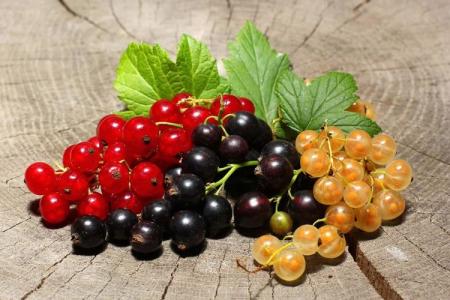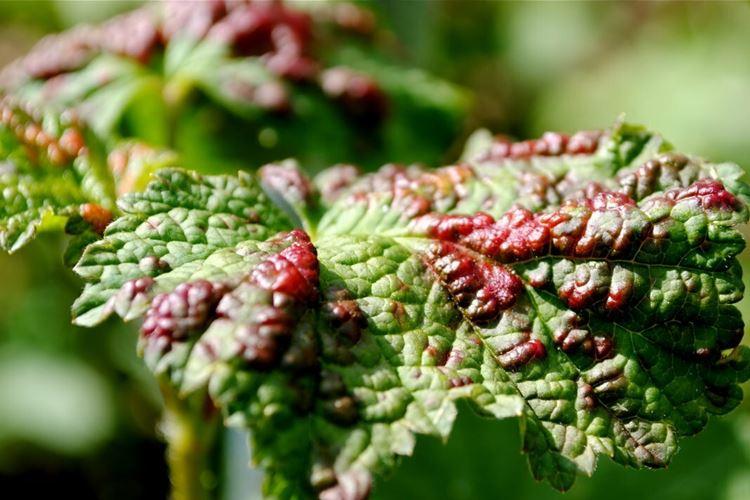
Currants are not only tasty and healthy berries, but also some not the most pleasant surprises. Like all plants, it can turn yellow and dry. But sometimes the leaves become covered with red spots, which drives inexperienced gardeners into a real panic. To preserve your nervous system, we hasten to tell you what it is and how to treat the bush!
Currant anthracnose
Fungal disease affects the leaf plates with small and chaotic red spots. Gradually, they become larger, change their shade and become covered with a shiny coating. At later stages, small spots merge into one, the leaves dry, and the disease passes to the crop.
Peculiarities
Although anthracnose starts from the leaves, it can affect all parts of the plant. For example, on berries, it appears as small brown spots with a crimson border. The bushes are prematurely bare, the yield drops at times, and in the worst case, the currants may die. Due to anthracnose, the bushes become more sensitive to frost.
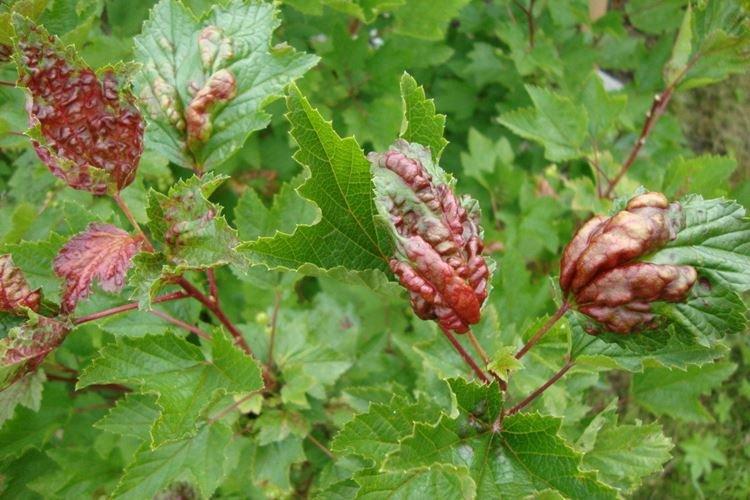
How to process?
In the fall, be sure to remove plant debris, because this is how spores winter, and not only anthracnose. In the spring and after harvesting, treat the currants with Bordeaux liquid. For treatment, use specialized fungicides - Fundazol, Previkur, Profit Gold and others.
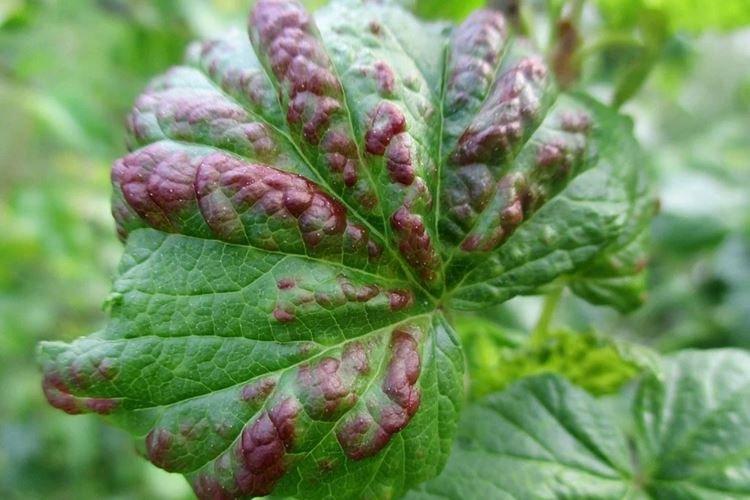
Gall aphid on currants
If the red spots are deformed and bulging, and young shoots are lagging behind in development or are bent, turn a few leaves to the opposite side. Most likely, you will see feasting colonies of aphids, which suck out all the juices from the plant.
Peculiarities
Gall aphids are also called red currant aphids, so it practically does not occur on black aphids. But black currant is attacked by another pest - gooseberry aphid. Because of it, young leaves at the tops of the shoots first curl up.
It is quite difficult to see aphids visually, because they are very small. Therefore, few people manage to detect the pest in time - usually there are already too many of them.
The swellings on the leaves are formed due to the reaction of currants to damage, and in essence they are neoplasms. Young leaves are most affected because the old ones are tougher and it is more difficult for aphids to pierce the surface.
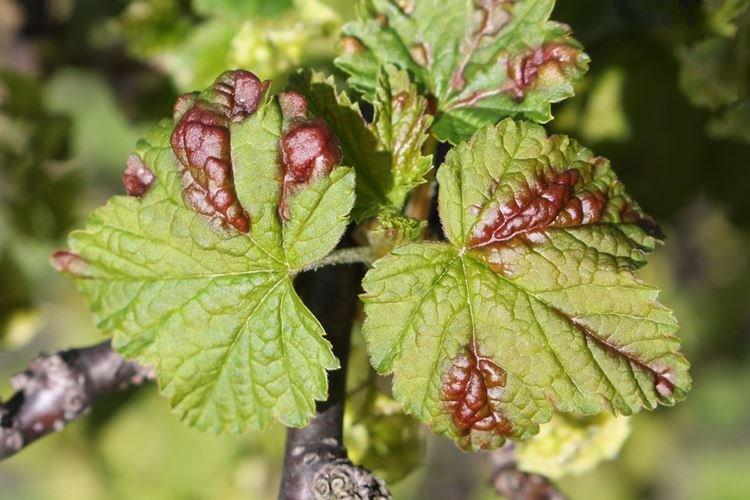
How to process?
Aphids can first be gently washed off with water or soapy water, and then the currants can be treated with insecticides - Fitoverm, Aktofit or analogs. Washing off may seem like a dubious method, but in fact, it can kill up to 90% of the colony. We recommend removing too damaged leaves and shoots, and treating the cuts with charcoal or garden pitch.
Most often, aphids do not require strong pesticides because their shell is very soft. Safe organic compounds are suitable for destruction. For example, herbal infusions, essential oils, garlic or tobacco infusions. So that the liquid envelops the leaves and lingers on them longer - add about 40-50 g of soap to the bucket of solution.
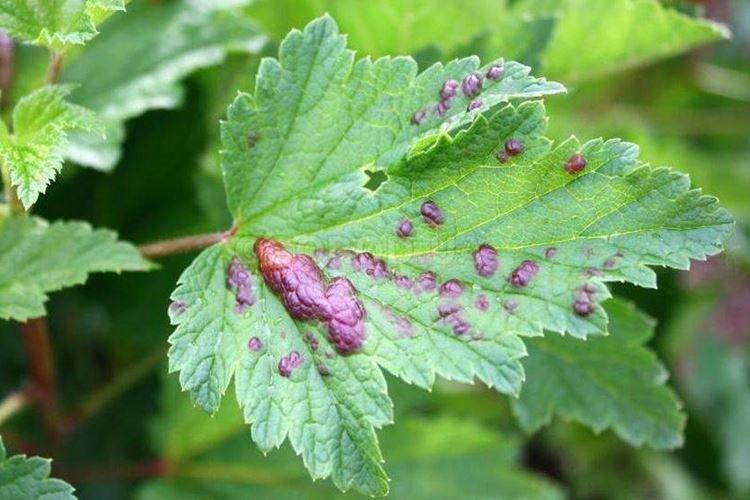
Spring processing of currants from red spots
In the spring, treat the garden with a weak solution of Bordeaux liquid twice with an interval of 2 weeks. For the first time, it is important to be in time before the buds begin to bloom - this is the prevention of fungi. But the second treatment after the appearance of young leaves will protect against overwintered aphids.
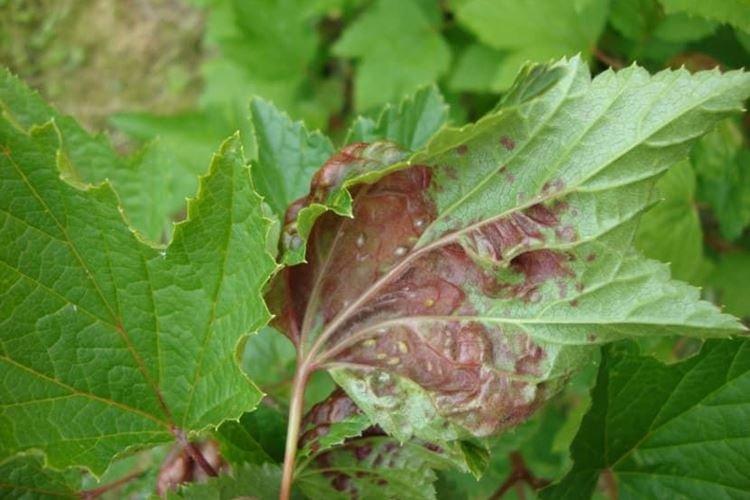
Summer treatment of currants from red spots
When currant berries are already beginning to form on the bushes, it is categorically impossible to use pesticides. Otherwise, they will accumulate in the structure of the fruit and then go directly to your table. If the harvest is close, and the problem is just beginning, we recommend waiting out, gradually removing the damaged leaves.
If shrubs still need to be treated, use the mildest products.An infusion of dandelions, celandine, tomato tops, onions or garlic is suitable. Plant small beds of fragrant herbs near the currants to attract ladybirds and lacewings, the natural enemies of aphids.
For anthracnose treatment, use fungicides no later than two weeks before harvest. Be sure to loosen and weed the beds so that there are no weeds and air can circulate.
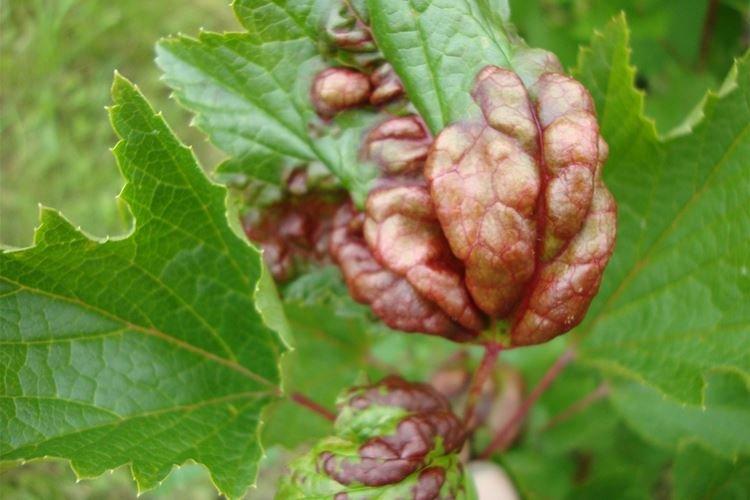
Autumn processing of currants from red spots
In the fall, first of all, collect and burn all the dry leaves from under the currant bushes. Dig up the soil for the last time for the winter, carry out sanitary pruning and thin out too dense crowns. Treat the cuts with garden varnish, spray the shrubs and the ground around with insecticides or copper-based preparations.
